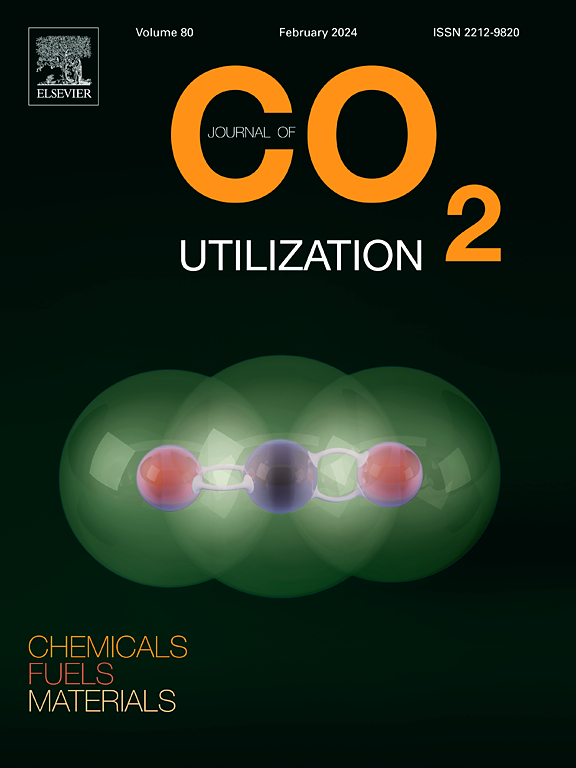光催化CO₂还原的铁氧体基纳米材料:合成,性能和机理见解
IF 7.2
2区 工程技术
Q1 CHEMISTRY, MULTIDISCIPLINARY
引用次数: 0
摘要
科学界对使用磁性纳米颗粒,特别是铁氧体基纳米材料光催化还原二氧化碳(CO2)表现出越来越大的兴趣。与其他纳米材料相比,它们可以提供一系列有利的特性,包括高性能、低成本、低毒性和独特的磁性,便于使用外磁场进行分离。本文综述了铁氧体基磁性纳米材料光催化CO₂还原的最新研究进展。它独特地整合了合成、性能和机械见解方面的最新进展,突出了新兴材料,将基础科学与可持续二氧化碳转化和太阳能燃料发电的实际挑战联系起来。它全面概述了它们的合成、表征和光催化性能,测量技术,如尺寸调谐、共催化剂负载、掺杂、与等离子体材料耦合、氧空位、电荷分离方法、形态优化、孔隙增强、异质结形成和Z-scheme实现。通过弥合基础科学与应用挑战之间的差距,本综述确定了开发高效、磁可回收光催化剂的新兴设计原则和未来方向,旨在通过太阳能驱动的化学转化减少二氧化碳排放。本文章由计算机程序翻译,如有差异,请以英文原文为准。
Ferrite-based nanomaterials for photocatalytic CO₂ reduction: Synthesis, properties, and mechanistic insights
The scientific community has shown increasing interest in the use of magnetic nanoparticles, particularly ferrite-based nanomaterials, for the photocatalytic reduction of carbon dioxide (CO2). Compared to other nanomaterials, they could provide a range of advantageous characteristics, including high performance, low cost, low toxicity, and distinctive magnetic properties that facilitate separation using external magnetic fields. This review offers a comprehensive and updated assessment of ferrite-based magnetic nanomaterials for photocatalytic CO₂ reduction. It uniquely integrates recent advancements in synthesis, properties, and mechanistic insights, highlighting emerging materials to bridge fundamental science with practical challenges for sustainable CO₂ conversion and solar fuel generation. It presents a thorough overview of their synthesis, characterization, and photocatalytic properties, surveying techniques like dimensional tuning, co-catalyst loading, doping, coupling with plasmonic materials, oxygen vacancies, charge separation methods, morphological optimization, porosity enhancement, heterojunction formation, and Z-scheme implementation. By bridging the gap between fundamental science and applied challenges, this review identifies emerging design principles and future directions for developing highly efficient, magnetically recoverable photocatalysts aimed at mitigating CO₂ emissions through solar-driven chemical transformation.
求助全文
通过发布文献求助,成功后即可免费获取论文全文。
去求助
来源期刊

Journal of CO2 Utilization
CHEMISTRY, MULTIDISCIPLINARY-ENGINEERING, CHEMICAL
CiteScore
13.90
自引率
10.40%
发文量
406
审稿时长
2.8 months
期刊介绍:
The Journal of CO2 Utilization offers a single, multi-disciplinary, scholarly platform for the exchange of novel research in the field of CO2 re-use for scientists and engineers in chemicals, fuels and materials.
The emphasis is on the dissemination of leading-edge research from basic science to the development of new processes, technologies and applications.
The Journal of CO2 Utilization publishes original peer-reviewed research papers, reviews, and short communications, including experimental and theoretical work, and analytical models and simulations.
 求助内容:
求助内容: 应助结果提醒方式:
应助结果提醒方式:


